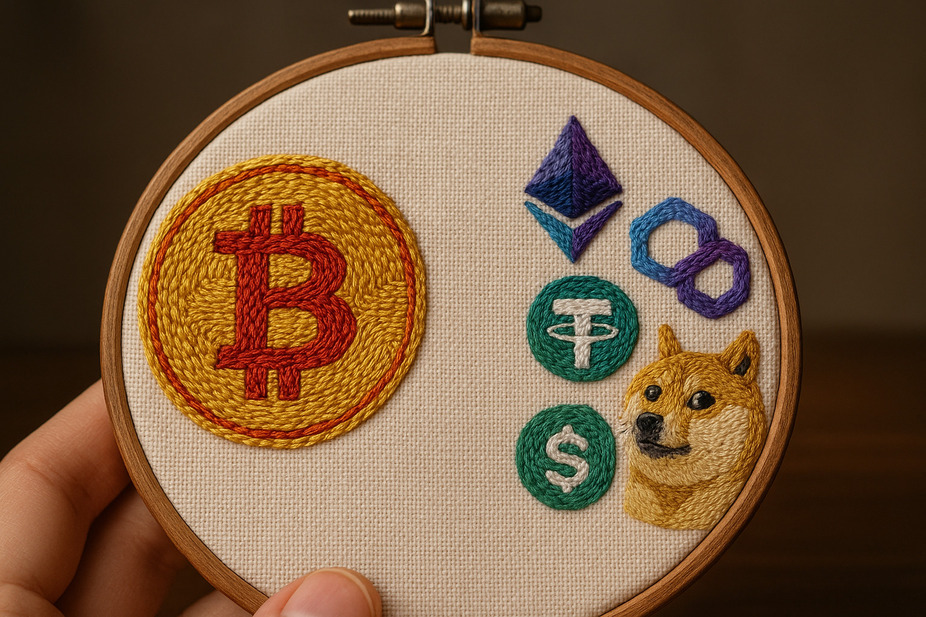Tron
Download Ironwallet app and get tool for making transaction without network fee
About TRON
TRON (TRX) is a blockchain-based decentralized platform that aims to build a worldwide free content entertainment ecosystem. Founded by Justin Sun, TRON allows creators to freely publish, store, and own their content without centralized platforms controlling or profiting from their work.
Instead, content creators connect directly with consumers and can receive direct payment through TRX, TRON’s native cryptocurrency. By allowing content producers to sell directly to consumers without intermediaries, TRON hopes to empower individuals in the digital entertainment world rather than large corporations.
The TRON platform and protocol is built to handle high throughput and provide scalability to support massive volumes of transactions required by the digital entertainment industry. Despite initial skeptics, TRON has grown to support over $10 billion in total value locked on its platform and consistently ranks as a top 15 cryptocurrency by market capitalization.
History and Background of TRON (TRX)
TRON was founded in September 2017 by Justin Sun, a protégé of Alibaba founder Jack Ma. Sun previously founded the popular app Peiwo and acted as the Chinese representative for Ripple before starting TRON. The open-source blockchain protocol was created to construct a global digital content ecosystem based around decentralized applications.
The TRON whitepaper outlined lofty goals to become an infrastructure for a decentralized internet and true peer-to-peer digital entertainment platform. TRON would accomplish this by providing high throughput, scalability and availability for decentralized applications that require massive computing resources and transaction throughput.
After an initial coin offering in 2017 that raised $70 million, the TRON mainnet was officially launched in June 2018. Since then, TRON has consistently ranked as a top 15 cryptocurrency project by market capitalization. As of 2023, TRON hosts over 79 million user accounts and has facilitated over 3.2 billion transactions on its blockchain.
The Technology Behind TRON
TRON aims to establish a truly decentralized internet and content ecosystem. The founders set out to solve issues they perceived in existing blockchain protocols like Bitcoin and Ethereum – limited throughput, scalability, and high costs prohibited running large-scale decentralized applications.
TRON protocol was specifically engineered to achieve high transactions per second, with the ability to scale to handle enormous volumes required by the digital entertainment space. The network utilizes a delegated proof-of-stake consensus that leverages 27 super representatives to validate transactions and achieve consensus efficiently.
An account-based model allows TRON to process transactions parallelly, increasing throughput. And native support smart contracts on the blockchain enabled decentralized applications like decentralized exchanges, lending protocols and other DeFi solutions. The robust bandwidth and throughput has attracted developers to build projects on TRON targeting the $2 trillion global entertainment space.
TRON Consensus Mechanism
TRON utilizes a Delegated Proof of Stake (DPoS) consensus protocol that leverages a real-time voting system to achieve high scalability, throughput, and availability. The TRON network is secured by 27 elected Super Representatives (SRs) that validate transactions and package them into blocks.
These SRs are voted in by TRON holders, establishing an incentive for SR nodes to provide robust infrastructure to ensure they retain votes. The founder notes that this governance model empowers the TRON community while limiting energy consumption.
With average block generation time of just 3 seconds and capacity handling up to 2000 transactions per second, the TRON network can theoretically scale to support incredible demand experts assess. Researchers have recorded daily transaction volume on TRON surpassing even payment giants like PayPal, demonstrating powerful throughput.
The innovative use of delegated nodes avoids limitations of proof-of-work while leveraging community participation the experts explain. This allows TRON to balance decentralization with superior speed at a scale suited for global dApps.
TRON dApps and Smart Contracts
The TRON protocol allows developers to create decentralized applications (dApps) and smart contracts that run on the TRON blockchain. TRON supports the TVM smart contract system, a specialized VM developed specifically for blockchain and the TRON ecosystem. This allows dApps to achieve high efficiency and throughput.
As TRON aims to support global digital entertainment and content sharing, specialized dApps have emerged including social networking platforms, entertainment and gaming sites, casino platforms, prediction markets, and more. Example dApps are BitTorrent for file sharing, Poloniex decentralized exchange, and WINk online gaming site. With robust scalability, low fees, and native smart contract support, over 800 diverse dApps operate on TRON attracting active users to Web 3.0.
TRX: The Native Cryptocurrency of TRON
TRX is the native cryptocurrency that powers the TRON network and ecosystem. TRX coins enable transactions between users on the TRON blockchain, serving as the basic unit of account. Based on the ERC-20 standard initially, TRX has powered the TRON mainnet since its independence in 2018.
TRX enables users to execute smart contracts, use decentralized applications, and pay transaction fees on TRON. Average fees are under $0.01 ensuring micropayments are convenient for content creators monetizing works. TRX also allows token holders to participate in network governance through voting rights. Users can gain voting power by freezing TRX holdings, then voting for Super Representatives and other protocol-level proposals.
Over 99 billion TRX were created in the genesis block, with a slight inflation rate to motivate participation without dilution. As usage and dApps grow on TRON, demand for TRX may increase experts project. TRX broke into the top 15 cryptos by market cap indicating traction as TRON pushes for a decentralized content and app ecosystem experts note.
Partnerships and Collaborations
Since launch, TRON has actively partnered with technology and entertainment leaders to drive adoption. An early 2018 partnership with China’s largest bike sharing company OFO brought TRON’s blockchain capabilities to tackle issues from credit scoring to GPS tracking. This demonstrated TRON’s early traction in powering large-scale sharing economy platforms.
The acquisition of file sharing giant BitTorrent soon followed, immediately onboarding over 100 million new active users to the protocol. BitTorrent’s decentralized DNA in peer-to-peer content distribution aligned seamlessly with TRON’s mission. Partnerships with major travel platforms like Trip.com and Alitrip also highlight how TRON expands beyond just entertainment into tourism and hospitality.
On the entertainment front, TRON has enabled video platforms, social networks, and content creators to transition to decentralized models. A highlight was the 2018 purchase of Peiwo – a leading audio content community. This raised eyebrows in the blockchain world as TRON took ownership of an app with 10 million registered users showcasing real-world adoption.
Key Features of TRON
Under the hood, experts highlight several key technical innovations that enable TRON’s rapid growth. The protocol can handle over 2,000 transactions per second, dwarfing rates achieved by early chains like Bitcoin and even Ethereum. This extreme throughput allows powering complex dApps at scale.
TRON leverages a Delegated Proof-of-Stake model where token holders elect ‘Super Representatives’ to validate transactions and uphold network integrity. This governance mechanism avoids concentrated power in mining pools seen in some chains enhancing decentralization through community participation.
Users are also attracted to negligible transaction fees on TRON, which average under $0.01 making micropayments viable. This facilitates monetization for content creators directly interfacing with consumers rather than relying on centralized middlemen experts explain.
Comparison with Other Cryptocurrencies
Unlike Bitcoin’s narrow focus on payments, TRON functions as a decentralized operating system for an entire app and content ecosystem on the blockchain according to analysts. While Ethereum pioneered smart contract applications, congestion and high gas fees have hindered growth. TRON leapfrogs legacy protocols with over 100x higher throughput and fraction of the fees to make decentralized apps scalable.
TRON does share similarities with other next-generation chains like EOS and Cardano that also target enhanced scalability, speed, and usability. However, TRON stands out with massive transaction capacity, negligible fees, and clear emphasis on empowering digital entertainment applications as Web 3.0 unfolds. Rather than aiming to unseat payment giants like Visa, TRON’s success hinges on transitioning content and social media away from centralized platforms towards user control.
Path to Mainstream Adoption
TRON aspires to make interaction between content consumers and creators more direct. However, competing without intermediaries depends on users accepting volatile cryptocurrencies and managing personal encryption keys safely. Until ready solutions exist for these barriers to entry, platforms like TRON may struggle gaining general public traction despite energized crypto-native communities.
Yet for creators facing issues like demonetization or fragmented audiences across isolated social channels, TRON does propose an alternative distribution model. By spurring innovative social platforms on blockchain infrastructure, TRON could seed future growth even if a killer application has yet to appear.
Technical merits alone will not spur mass adoption. User experience and compelling services give the public reason to choose unfamiliar technology. While its ambitions have achieved little real-world realization to date, TRON’s blueprint for an open source, decentralized internet does highlight why blockchain infrastructure promises to empower individuals in an increasingly digital world.





















